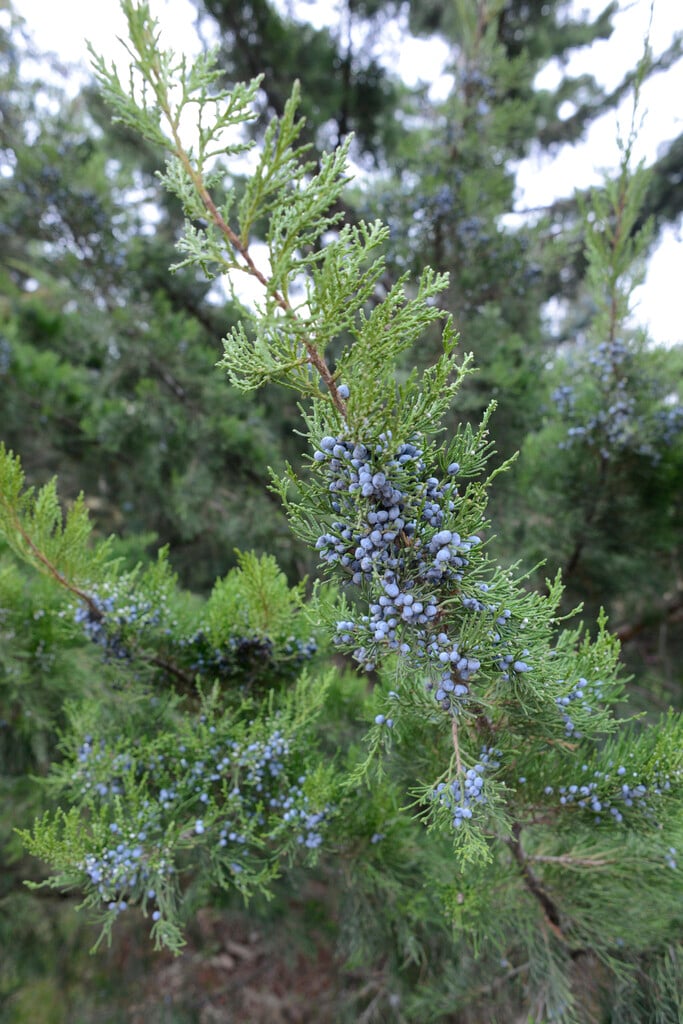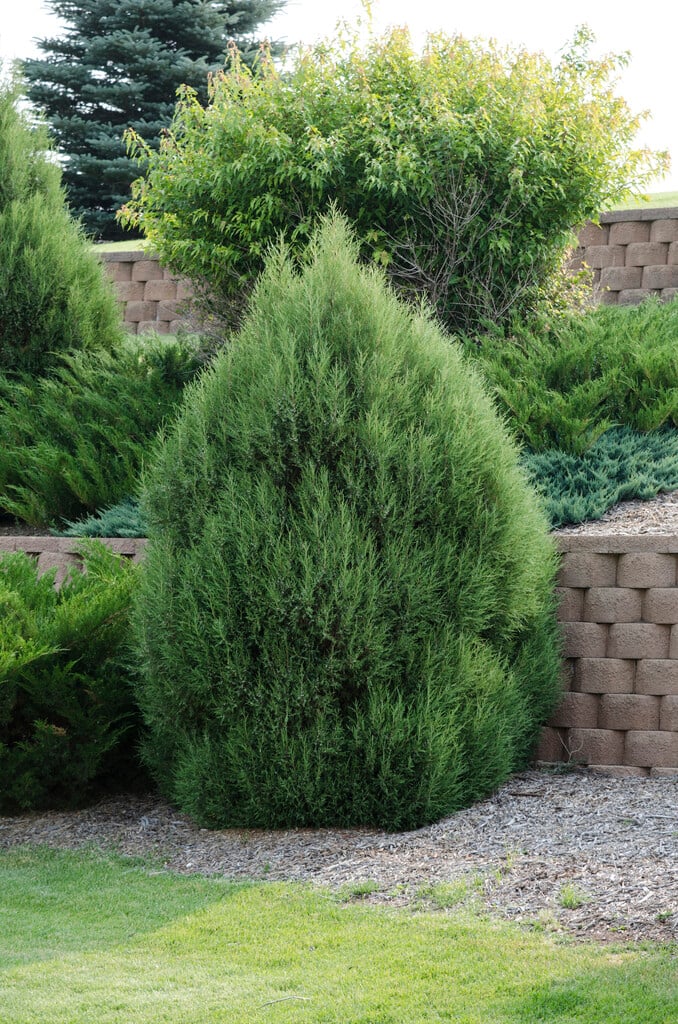Juniperus virginiana
pencil cedar
A cone-shaped or columnar evergreen tree with mid-to dark green needle-like foliage. As a mature specimen of 15-30m (50-100ft) it is well-branched with peeling brown bark. Small round blue-green fruits appear in autumn.
Size
Ultimate height
Higher than 12 metresTime to ultimate height
20–50 yearsUltimate spread
4–8 metresGrowing conditions
Moisture
Moist but well–drained, Well–drainedpH
Acid, Alkaline, NeutralColour & scent
| Stem | Flower | Foliage | Fruit | |
| Spring | Green | |||
|---|---|---|---|---|
| Summer | Green | |||
| Autumn | Green | |||
| Winter | Green |
Position
- Full sun
Aspect
East–facing or South–facing or West–facing
Exposure
Exposed or ShelteredDrought resistance
Yes Hardiness
H6Botanical details
- Family
- Cupressaceae
- Native to GB / Ireland
- No
- Foliage
- Evergreen
- Habit
- Columnar upright, Spreading branched
- Potentially harmful
- Harmful if eaten/skin allergen. Wear gloves and other protective equipment when handling
- Genus
Juniperus can be prostrate or erect, evergreen shrubs or trees with aromatic, scale-like or sharply pointed awl-shaped leaves, and small globose fruits
- Name status
Correct
How to grow
Cultivation
Grow in any well-drained soil, including dry, chalky or sandy soils in full sun. See tree cultivation
Propagation
Propagate by semi-hardwood cuttings in early autumn
Suggested planting locations and garden types
- Architectural
- Low Maintenance
- Hedging and screens
Pruning
See pruning group 1
Pests
May be susceptible to aphids, scale insects, conifer red spider mite and caterpillars
Diseases
May be susceptible to phytophthora, canker and honey fungus. See also Conifers: brown patches
Love gardening
Sign up to receive regular gardening tips, inspiration, offers and more
View our Privacy Policy
Get involved
The Royal Horticultural Society is the UK’s leading gardening charity. We aim to enrich everyone’s life through plants, and make the UK a greener and more beautiful place.

